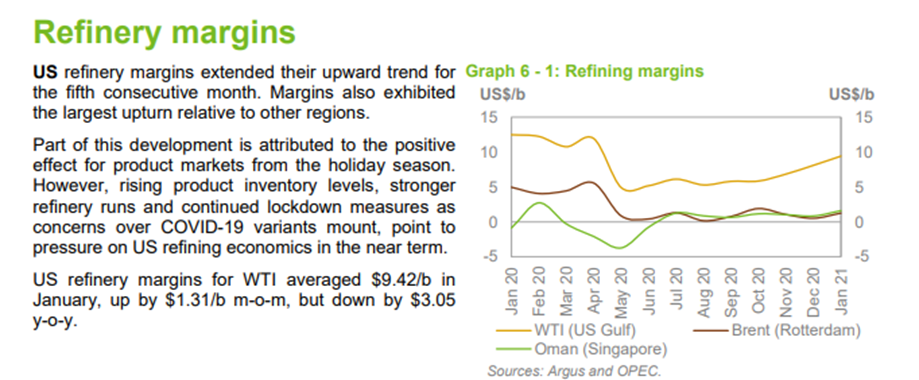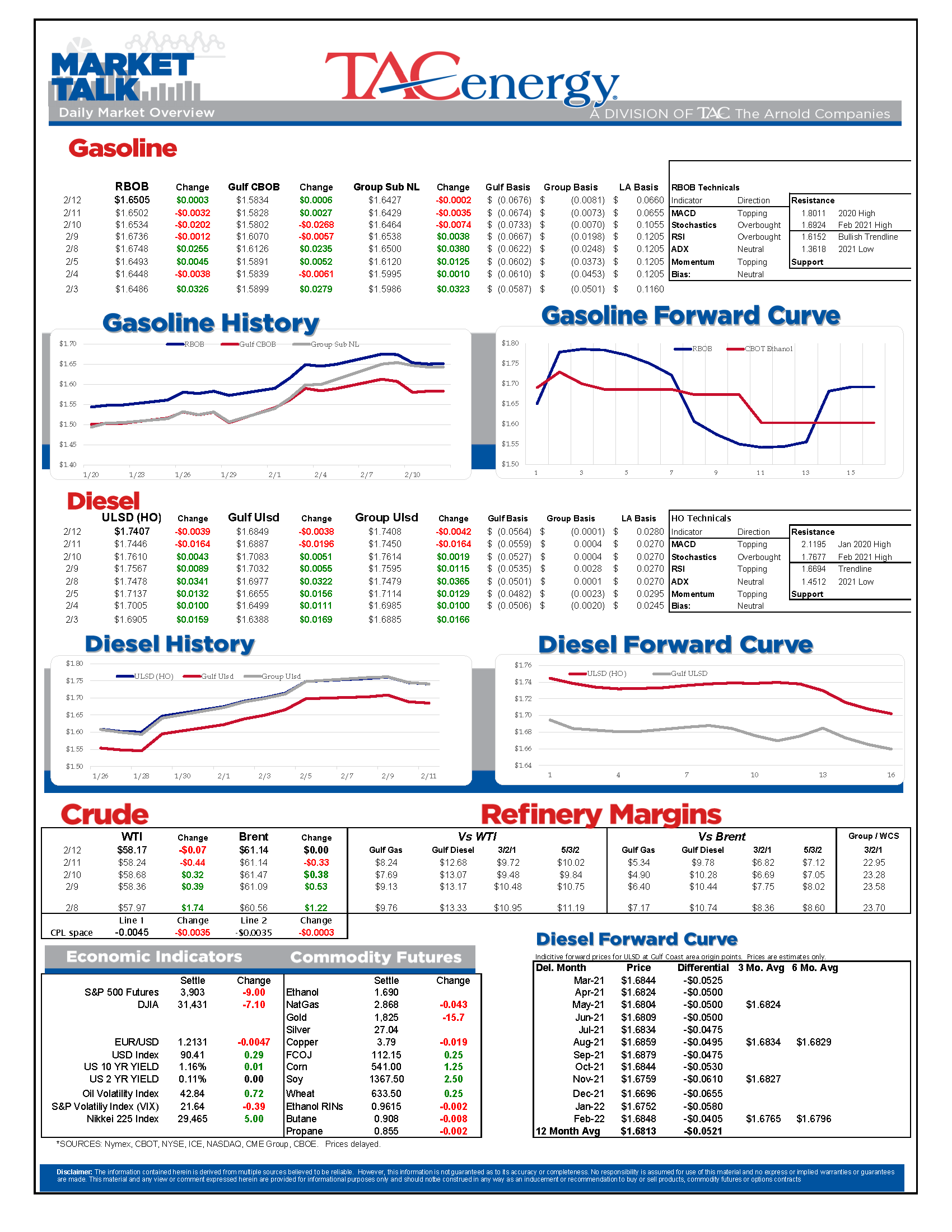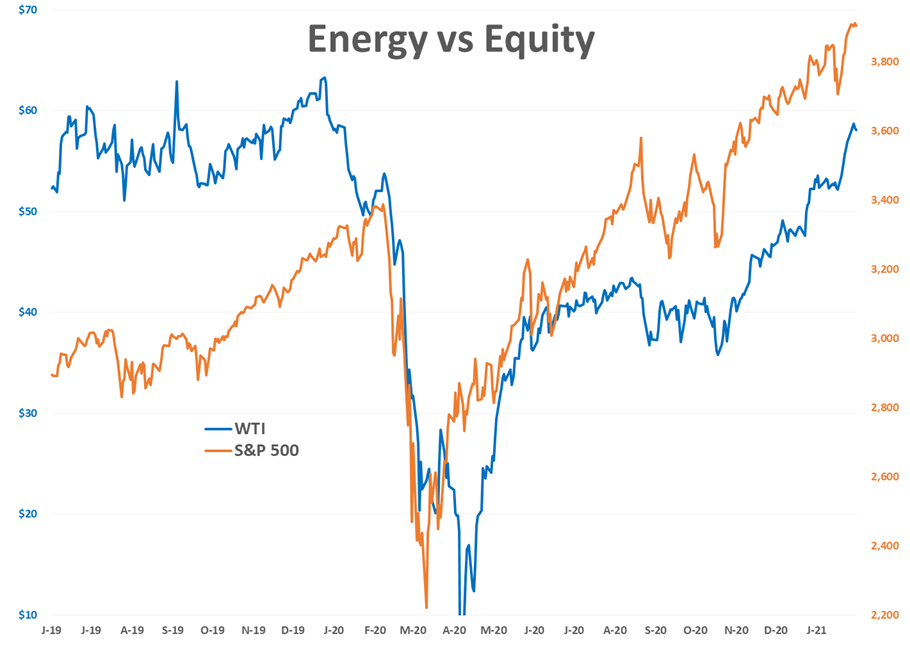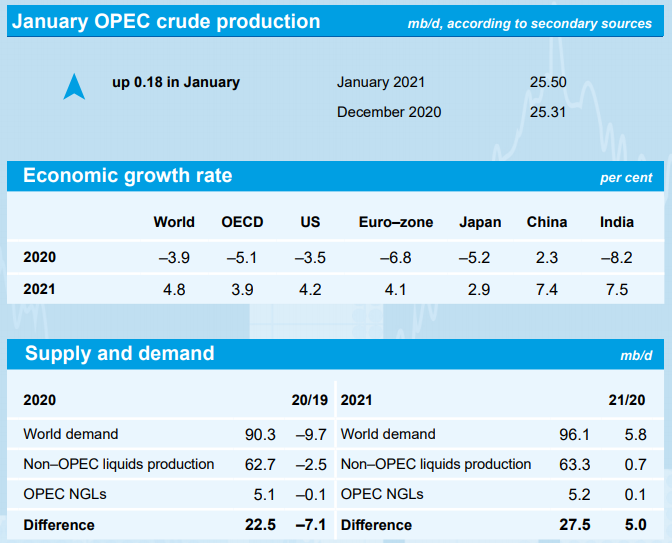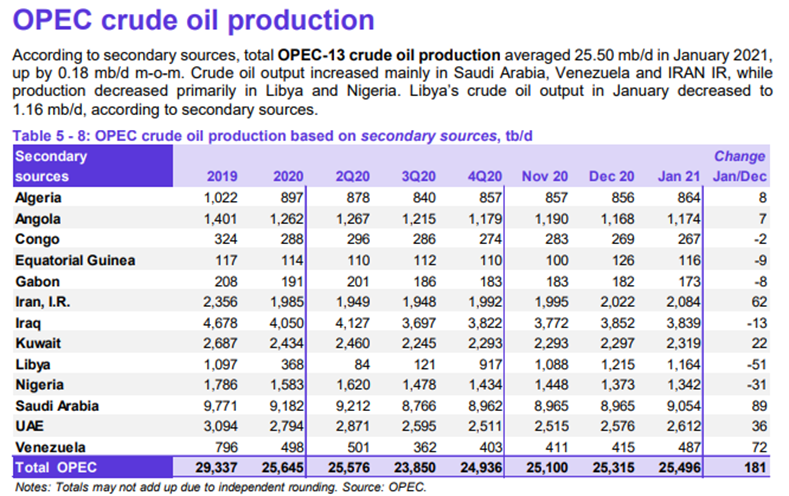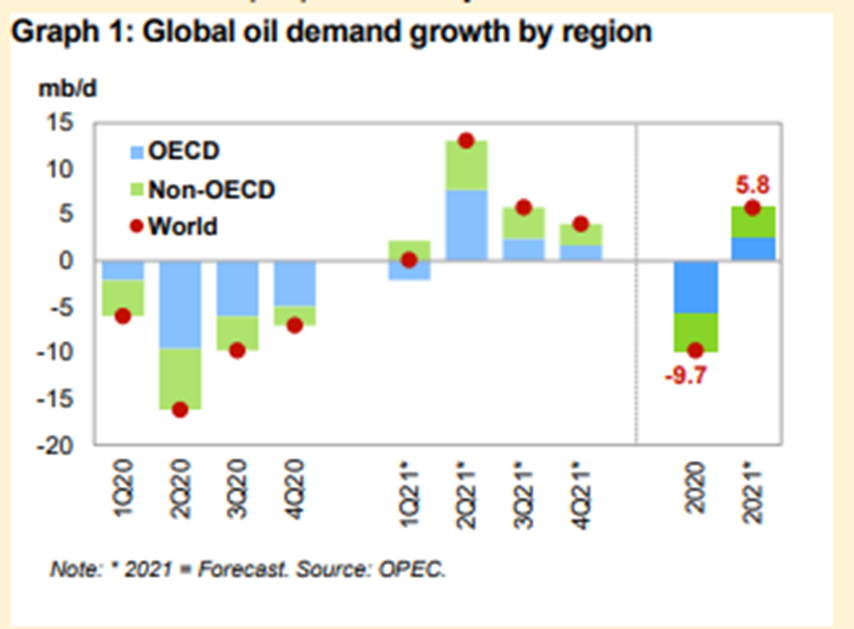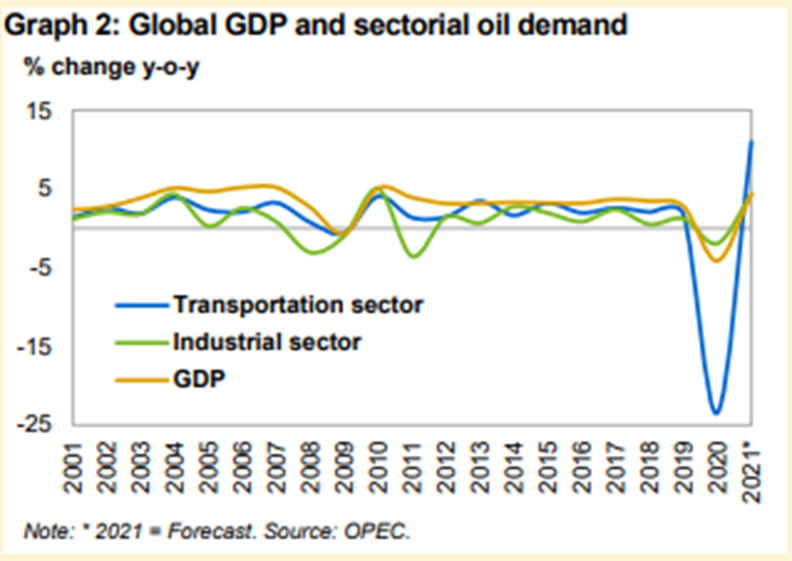Another Soft Start For Energy Markets

It’s another soft start for energy markets Friday as the upward momentum has waned in the back half of the week. Although most prices are still modestly in the red (March RBOB did manage to turn positive around 8 a.m.) we’ve already seen refined products bounce 1.5 cents off of their overnight lows, and they haven’t yet even tested the upward-sloping trendline, so it’s still too soon to call an end to the 3.5 month old bull market, which marks the longest sustained rally in two years.
A rally in the U.S. Dollar is getting some of the credit for the pullback in oil prices, even though the correlation between the two has been strongly positive for much of the past month, reversing the normal relationship. A pullback in equity markets after reaching fresh record highs this week is also getting some credit for the pause in the rally, and the correlation between daily moves in the S&P 500 and WTI remains north of 80%.
OPEC’s monthly oil market report showed the cartel’s total output increased by 181,000 barrels/day in January, with increases from Saudi Arabia, Venezuela and Iran offsetting decreases in Libya and Nigeria. We should see a sharp drop in output soon as Saudi Arabia prepares its unilateral production cuts it announced when it couldn’t convince the Friends of OPEC alliance led by Russia to cut output to avoid flooding the fragile market with supply. Like all of the other monthly reports released this week, OPEC expects an acceleration in demand growth in the back half of the year but the full year demand estimates were revised slightly lower from last month due to extended lockdowns.
Did you know refinery-effect snow was a thing? It happened this week in Denver, and based on the forecast, some plants in TX and LA could experience something like this next week, that is if they’re still able to operate through the record-setting cold that’s forecast for parts of the country that don’t insulate their pipes. Expect to see some terminal and/or refinery disruptions if the forecasted temperatures materialize across the south, not to mention the likelihood that trucks may breakdown if they leave their diesel untreated for the cold.
Monday is President’s Day, so spot markets will not be assessed, and most rack prices will carry through from tonight until Tuesday. NYMEX contracts will trade in an abbreviated session on Monday, but there will not be a settlement.
Click here to download a PDF of today's TACenergy Market Talk.
News & Views
View All
Energy Futures Are Caught Up In Headline Tug-O-War This Morning
Energy futures are caught up in headline tug-o-war this morning with Canadian oil production concerns and a positive US GDP report trying to push prices higher while sinking Chinese demand worries and Gaza ceasefire hopes are applying downward pressure. The latter two seem to be favored more so far this morning with WTI and Brent crude oil futures down ~45 cents per barrel, while gasoline and diesel prices are down about half a cent and two cents, respectively.
No news is good news? Chicago gasoline prices dropped nearly 30 cents yesterday, despite there not being any update on Exxon’s Joliet refinery after further damage was discovered Wednesday. Its tough to say if traders have realized the supply situation isn’t as bad as originally thought or if this historically volatile market is just being itself (aka ‘Chicago being Chicago’).
The rain isn’t letting up along the Texas Gulf Coast today and is forecasted to carry on through the weekend. While much of the greater Houston area is under flood watch, only two refineries are within the (more serious) flood warning area: Marathon’s Galveston Bay and Valero’s Texas City refineries. However, notification that more work is needed at Phillip’s 66 Borger refinery (up in the panhandle) is the only filing we’ve seen come through the TECQ, so far.
Premiums over the tariff on Colonial’s Line 1 (aka linespace value) returned to zero yesterday, and actually traded in the negatives, after its extended run of positive values atypical of this time of year. Line 1’s counterpart, Line 2, which carries distillates from Houston to Greensboro NC, has traded at a discount so far this year, due to the healthy, if not over-, supply of diesel along the eastern seaboard.
Click here to download a PDF of today's TACenergy Market Talk.

WTI And Brent Crude Oil Futures Are Trading ~$1.50 Per Barrel Lower In Pre-Market Trading
The across-the-board drawdown in national energy stockpiles, as reported by the Department of Energy yesterday, stoked bullish sentiment Wednesday and prompt month gasoline, diesel, and crude oil futures published gains on the day. Those gains are being given back this morning.
The surprise rate cut by the People’s Bank of China is being blamed for the selling we are seeing in energy markets this morning. While the interest rate drop in both short- and medium-term loans won’t likely affect energy prices outright, the concern lies in the overall economic health of the world’s second largest economy and crude oil consumer. Prompt month WTI and Brent crude oil futures are trading ~$1.50 per barrel lower in pre-market trading, gasoline and diesel are following suit, shaving off .0400-.0450 per gallon.
Chicagoland RBOB has maintained its 60-cent premium over New York prices through this morning and shows no sign of coming down any time soon. Quite the opposite in fact: the storm damage, which knocked Exxon Mobil’s Joliet refinery offline on 7/15, seems to be more extensive than initially thought, potentially extending the repair time and pushing back the expected return date.
There are three main refineries that feed the Chicago market, the impact from one of them shutting down abruptly can be seen in the charts derived from aforementioned data published by the DOE. Refinery throughput in PADD 2 dropped 183,000 barrels per day, driving gasoline stockpiles in the area down to a new 5-year seasonal low.
While it seems all is quiet on the Atlantic front (for now), America’s Refineryland is forecasted to receive non-stop rain and thunderstorms for the next four days. While it may not be as dramatic as a hurricane, flooding and power outages can shut down refineries, and cities for that matter, all the same, as we learned from Beryl.

